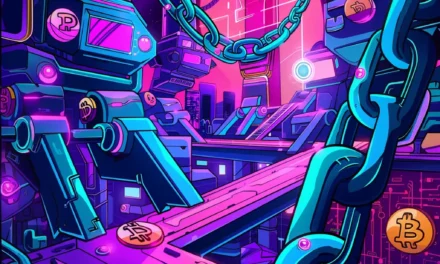Blockchain applications have revolutionized the world of technology in recent years: however, these innovations still present some obstacles, such as scalability issues and security deficiencies. The Web3 ecosystem has solved many issues that centralized frameworks could not, such as taking power away from central authorities and enhancing transparency by introducing a decentralized public ledger open to anyone and everyone. However, there are still major improvements that could be implemented, as some processes are still problematic for decentralized frameworks.
One of these is scalability in blockchain, which usually refers to transaction speed, and which many call the “crypto industry’s bottleneck.” One implementation that decentralized projects have used to try to fix this issue are layer 2 frameworks, which take the load off the main blockchain and alleviate processing times. But do layer 2 frameworks effectively solve blockchain scalability issues in crypto? And what excatly do these implementations entail for these projects? Let’s find out.
What is scalability in blockchain?
Scalability is one of the main issues that the blockchain industry has faced since its inception, as it determines a number of factors that affect user experience in any particular project where crypto transactions are involved.
- The term “scalability” in Web3 environments usually refers to the “challenges encountered by a network when handling an increasing number of transactions.”
- When a crypto network increases in popularity and sees a relatively large growth in traffic, they will eventually encounter difficulties in processing transactions in a rapid, efficient seamless manner due to volume spikes.
- This in turn can lead not only to difficulties in processing transactions, but also to higher fees – which is something that normally occurs when there is a high-level of network congestion, which could be, for example, the case during a crypto market bull run.
- As a result of this scalability issue, users can also expect longer confirmation times, something that no blockchain application wants its customers to go through.
The Blockchain Trilemma: Any Solutions?
The Trilemma concept has become famous among blockchain communities, and was originally coined by the creator of Ethereum, Vitalik Buterin. What does it consist of and is there a solution?
- The Blockchain Trilemma essentially consists of the potential trade-offs between the three main and critical aspects that any blockchain applications needs to consider: security, scalability and decentralization.
- The trilemma itself, as Binance article indicates, “refers to the idea that its difficult for blockchains to achieve optimal levels of all three properties simultaneously.” Essentially, its possibile for a blockchain application to only concurently achieve two of the three properties simultaneously, and if you want to change that, you will need trade-offs in another of the three departments.
- Trade offs are therefore unavoidable between the three. Any network can obviously achieve a certain level of all three, but one will always be much lower than the other two. For example, increased decentralization in a projects grants users greater freedom to enter and exit their network, connect their wallet etc. At the same time though, security levels are compromised at some degree, as identites and background checks of users or new players are not necessarily verified.
- On the flip side, you can try to solve scalability issues by lowering the amount of participants in any given blockchain framework. However, doing so weakens decentralization levels, as control is handed to a smaller number of participants, as well as higher chances of outisde threats to the systems.
So what is a realistic and possible solution tot his seemingly unavoidable trilemma? Among other solutions that have been mentioned and applied in crypto ecosystems, one of the most recognized ones are Layer 2 applications. Let’s take a look at what they entail.
Layer 2: An Implementable Solution?
Layer 2 frameworks are among the most popular applications in the blockchain community when it comes to solving the Trilemma with dealt with in the section above. Other applications include a process called sharding and improvements in consensus mechanisms, but for the sake of this article, we will focus solely on Layer-2 implementations. In essence, the aim of these implementations is to enhance a blockchain’s scalability without affecting the other two sides of the trilemma: security and decentralization. Here’s how.
- First off, let’s define what Layer 2 properly means. It “refers to any on or off-chain network, system or technology built on top of a blockchain that helps extend the capabilities of the underlying base layer network.” In simpler terms, it is a framework that is built on top of an existing blockchain system, which we can call Layer 1.
- Layer 1 and Layer 2 solutions are two sides of the same coin when it comes to blockchain technology, as they are not mutually exclusive, with many networks and projects rather seeking to combine both in order to achieve exponentially increased scalability. These secondary protocols are essentially a vessel where transactions get “off-loaded” from the main blockchain. At a high level, Layer 2s are typically cemented to an underlying blockchain by a smart contract.
- Layer 2 frameworks do not impact decentralization or security levels either, but rather simply facilitate the throughput of the main blockcahin, which is able to handle more transactions. Some examples of these Layer 2 solutions in blockchain include the Ethereum-based Polygon or the Bitcoin-based Lightning Network.
- They solve the inital issue faced by these systems when the blockchain ecosystem first expanded (low transactions speeds and other problems we have spoken about in previous sections). By effectively acting as a helper to the underlying blockchain, these solutions are able to speed up transactions per second and therefore also offer lower gas fees.
In conclusion, blockchain scalability issues can certainly hamper a network and project’s ability to offer a seamless experience to its users. In crypot ecosystems, the Blockchain Trilemma has been pondered about for quite som time, as no Web3 application is and should be willing to compromise scalability, security or decentralization. Layer 2 frameworks offer a possibility for these applications to enhance scalability and their system’s throughput without the necessity of lowering their level of security or decentralization.
To read more about similar crypto-related topics, as well as other articles on decentralized gaming, sports and more, read the CoinGames blog and hea dover to CoinGames for a decentralized journey you won’t want to miss!




